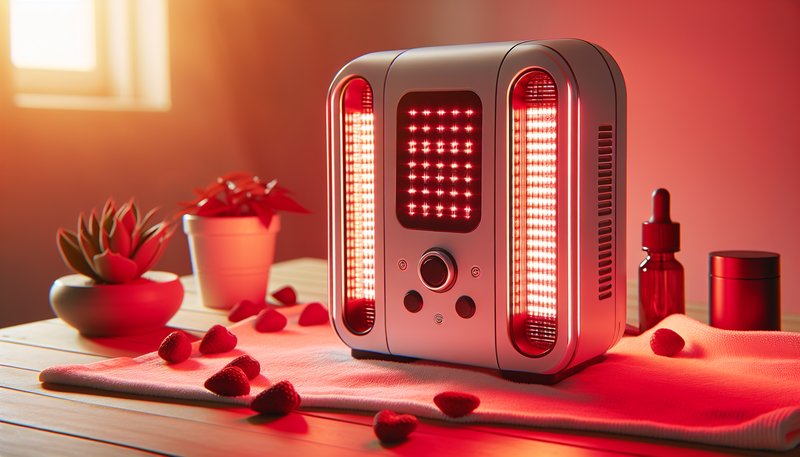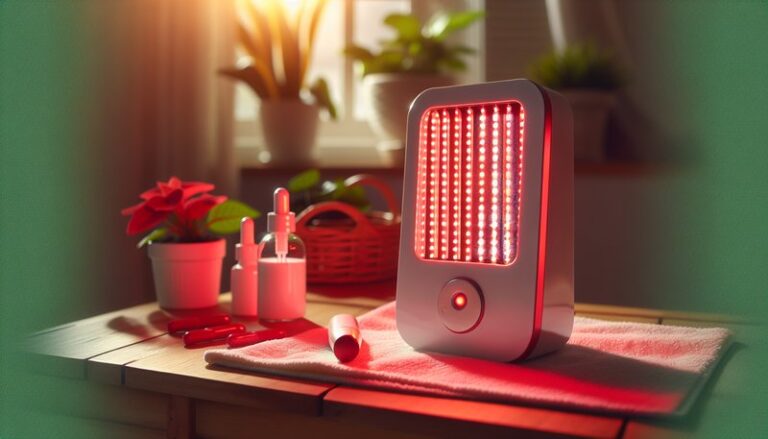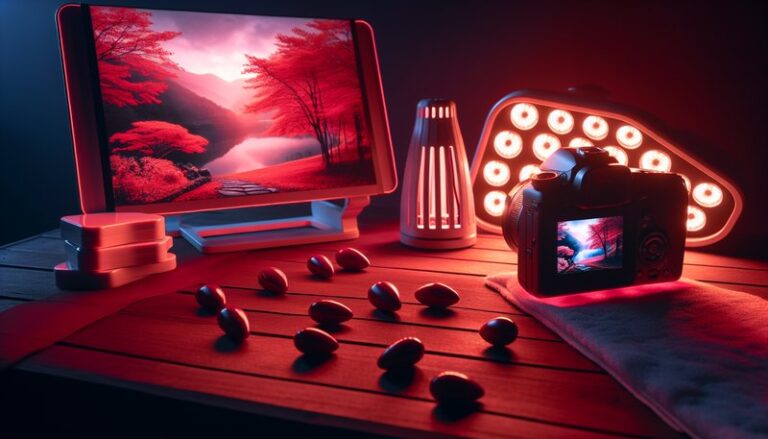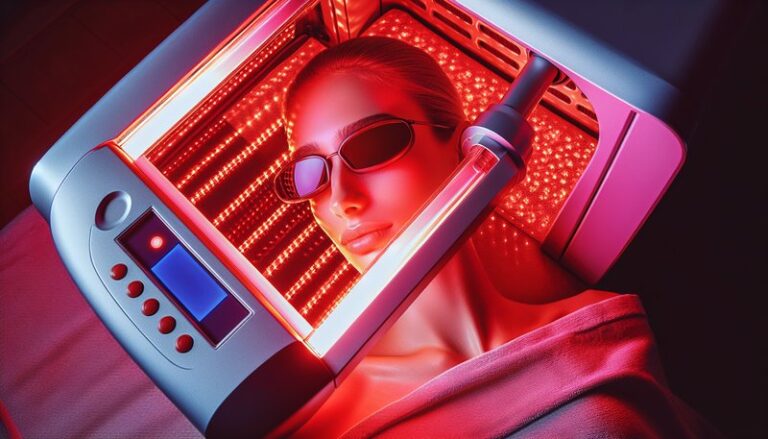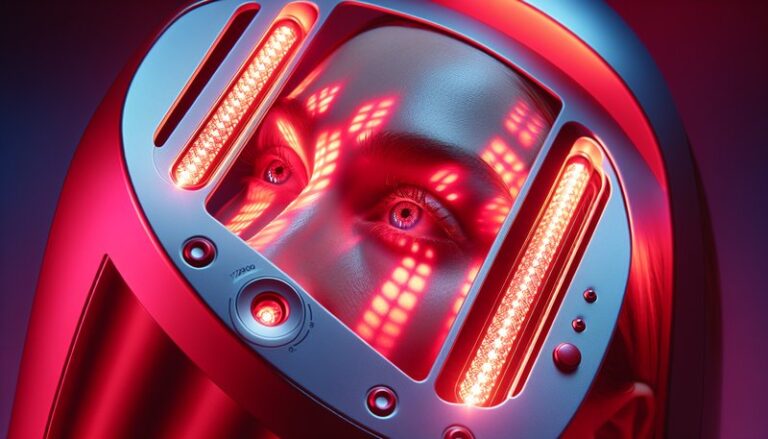Is Red Light Therapy Bad For You?
Is red light therapy just another wellness trend, or are there legitimate risks involved?
In recent years, red light therapy has gained popularity for its purported health benefits, including skin rejuvenation, enhanced healing, and pain relief. However, as with many emerging treatments, potential risks and side effects are often overlooked. This article will explore what red light therapy is, its benefits, and the safety considerations to keep in mind before trying it.
Key Takeaways
- Red light therapy is generally considered safe for most individuals, but potential side effects can occur.
- Benefits include improved skin health, reduced inflammation, and pain relief.
- Users should consider personal health conditions and consult with a healthcare professional before starting treatment.
What is Red Light Therapy?
Red light therapy, also known as low-level laser therapy (LLLT), involves exposing the skin to specific wavelengths of light—typically in the red and near-infrared spectrum. This light penetrates the skin and may stimulate cellular processes, ultimately leading to therapeutic benefits.
The therapy is used in various settings, including dermatology clinics for skin treatments, physical therapy for pain relief, and even at home with LED devices. The mechanism of action is thought to involve increased circulation, reduced oxidative stress, and enhanced cellular repair.
How Does it Work?
The exact mechanisms of how red light therapy works begin at the cellular level. When the light is absorbed by the mitochondria (the powerhouse of the cell), it enhances ATP production. This increase in energy may promote healing and regeneration in tissues, stimulate collagen production, and reduce inflammation.
What are the Benefits of Red Light Therapy?
The following points will explore the numerous ways in which red light therapy can be beneficial for health and well-being.
Improved Skin Condition
Red light therapy is often touted for its ability to reduce wrinkles, acne, and other skin issues. Clinical studies indicate that it can help diminish signs of aging by promoting collagen production, leading to smoother and healthier skin.
Pain Relief
Many studies suggest that red light therapy can alleviate pain caused by conditions such as arthritis, joint disorders, and sports injuries. The light’s anti-inflammatory properties may reduce swelling and enhance the healing of injuries.
Enhanced Muscle Recovery
Athletes and fitness enthusiasts use red light therapy to help recover from intense workouts. By reducing muscle soreness and stimulating healing, athletes can return to their training schedules more quickly.
Additional Benefits
- There is emerging evidence that red light therapy may play a role in treating hair loss by stimulating hair follicles.
- It may also help with mood and sleep disorders by influencing melatonin production and circadian rhythms.
- Studies indicate potential benefits in treating chronic skin conditions like psoriasis and eczema.
Is it Possible to Overdo Red Light Therapy?
While red light therapy is considered safe, it’s possible to experience side effects if used improperly. Overexposure can lead to skin irritation, headaches, and fatigue.
What are the Advantages of Home Use?
Using red light therapy at home offers convenience and flexibility. Users can integrate sessions into their daily routine without the need to travel to a clinic.
What are the Disadvantages of Home Use?
Conversely, home devices may vary widely in quality. Some may not deliver effective wavelengths or intensity, rendering treatments ineffective compared to clinical options.
What are the Things to Consider Before Starting Red Light Therapy?
Before beginning any new therapy, including red light therapy, it is critical to evaluate various factors that may affect its safety and efficacy.
Health Conditions
Individuals with certain medical conditions, such as photosensitivity or skin cancers, should exercise caution. Consulting a healthcare provider before starting treatment is essential.
Discover the facts in Can any red light be used for therapy?
Device Quality
When considering at-home devices, investing in high-quality equipment that delivers the correct wavelengths is crucial. Researching brands and devices can ensure users are getting effective treatment.
Treatment Frequency
Determining the appropriate frequency and duration of each session is key. Overdoing it may lead to adverse effects. Adherence to recommended guidelines can help prevent such issues.
Additional Considerations
- Consider any medications that may increase sensitivity to light.
- Be cautious of using red light therapy in conjunction with other skin therapies.
- Always follow the manufacturer’s guidelines for safe usage.
What are the Alternatives to Red Light Therapy?
Exploring alternatives can be beneficial for individuals uncertain about red light therapy.
LED Blue Light Therapy
For acne treatment, blue light therapy can be effective in killing acne-causing bacteria, offering a different but complementary approach to red light therapy.
Microdermabrasion
This non-invasive procedure can rejuvenate the skin by exfoliating the top layer, providing an alternative or complementary option for skin care.
See the full explanation Red Light Therapy Uses
Laser Treatments
More intensive than red light therapy, laser interventions can address similar skin concerns but might require a more extended recovery time.
Additional Alternatives
- Chemical peels for exfoliation and improvement of skin texture.
- RF (Radiofrequency) therapy can tighten skin by stimulating collagen and elastin production.
- Light-based therapies targeting different wavelengths according to specific skin issues.
Conclusion: Is it Recommended to Try Red Light Therapy?
In summary, while red light therapy offers various benefits, caution is advised. It is generally safe for most individuals, but those with specific health conditions should consult with healthcare professionals. It is essential to consider the quality of devices used and to adhere to established treatment guidelines.
Frequently Asked Questions
Is red light therapy safe?
Yes, red light therapy is generally considered safe, but it is essential to consult with a healthcare provider, especially for those with medical conditions.
How often should I use red light therapy?
Usage frequency varies by device and condition being treated; however, following manufacturer guidelines and recommendations from healthcare providers is vital for safety and effectiveness.
Can red light therapy help with acne?
Yes, red light therapy can help reduce acne inflammation and promote healing, making it a valuable treatment option when combined with other therapies.
Will I see immediate results?
Results can vary from person to person. Some may notice changes after a few sessions, while others might require several weeks of regular use to see significant improvements.
Is there anyone who should avoid red light therapy?
People with certain conditions such as a history of skin cancer, photosensitivity, or those taking medications that increase light sensitivity should avoid or consult a doctor before starting red light therapy.
